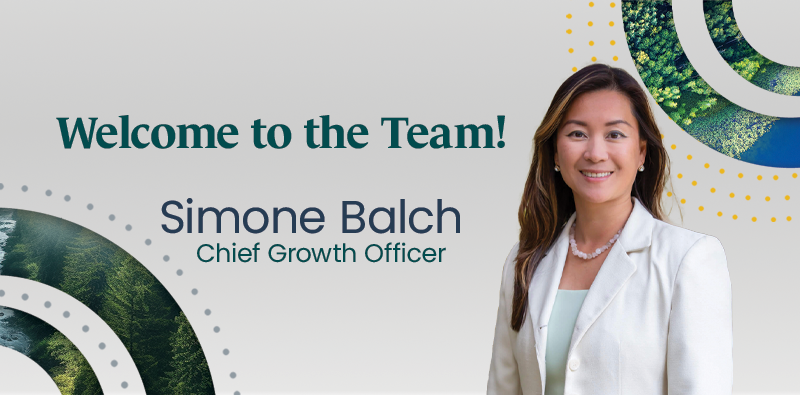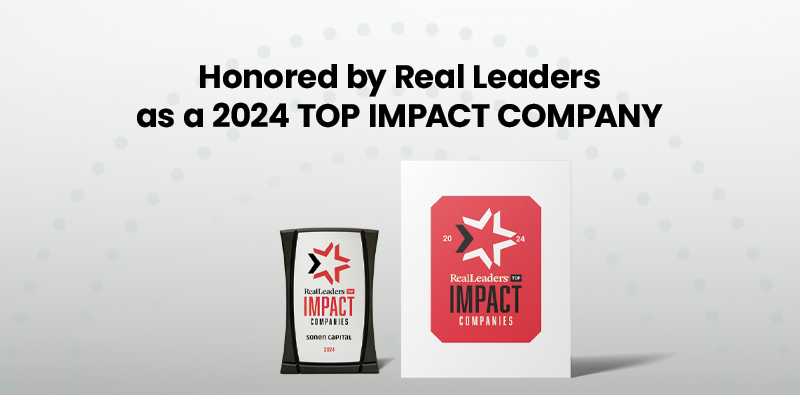
Acumen
August 24, 2015
Last month Acumen joined forces with global business software leader SAP to offer a two-week leadership development program in Silicon Valley for CEOs from nine Acumen-backed companies. This fellowship included a closed-door session hosted at First Round Capital, a seed-stage venture firm that is a giant in Silicon Valley, having been among the first to invest in the likes of Uber, Taskrabbit and Blue Apron. Acumen CEOs learned from Phin Barnes, a partner at First Round Capital about key tips for fundraising. They also spoke with four experts in the impact investing and social enterprise space: Morgan Simon from Pi Investments, Greg Neichin, Director of Ceniarth LLC, Justina Lai of Sonen Capital and Allen Taylor from Endeavor.
Here are the top 12 tips they’ve shared that you have to consider when fundraising for your social enterprise.
1. DON’T ACCEPT EVERY CHECK YOU’RE OFFERED.
When you’re running a cash-strapped business, it can be tempting to take every investment deal you’re offered. However, early on, you should develop a clear-eyed, strategic vision for the type of capital your business needs. “Too many companies bob and weave based on the investors they meet,” says Greg Neichin, Director of Ceniarth LLC, “It can be a problem for social enterprises when you try to blend all different kinds of investments, or when companies get financed in bizarre ways to meet the needs of the investor.” Instead, he says, entrepreneurs should think through what type of financing strategy makes the most sense to them, and then be vigilant about sticking to that fundraising plan. “You’ll end up with better financing structures in the long run,” Neichin says.
2. WHEN YOU’RE TRYING TO RAISE FUNDS, PAY ATTENTION TO 2 THINGS: STORY AND DATA.
Phin Barnes, a Partner at First Round Capital, says that good fundraising boils down to two things: being able to tell a compelling story about your company, and the ability to back up that story with data. As a VC, he views every round of funding as an opportunity for companies to create a bigger story and gather more data. “You should be thinking about the different hypotheses you want to test in order to generate that data to support the larger story,” Barnes says, “And then you have to be deliberate about driving those tests to conclusion, being purposeful about capturing all that data, and then being intentional about creating a narrative to get you to that next round of funding.”
3. CULTIVATING AN INVESTMENT IS ABOUT BUILDING A RELATIONSHIP, BOTH WITH THE INVESTOR AND THE INVESTOR’S NETWORK.
“The investment process really looks different for every deal,” says Morgan Simon, a consultant for Pi Investments, “However, our preference is to have as much time as possible to get to know how an entrepreneur operates before we invest in them.” Barnes from First Round echoes this, saying, “The typical process is that we get to know people over a long period of time.” Although they try to make the actual investment decision quickly once a company has pitched to partners, First Round typically gets acquainted with an entrepreneur long before that pitch happens, often through his or her involvement with another First Round company.
4. TRY TO RAISE MONEY IN CHUNKS, RATHER THAN INCREMENTS.
Neichin of Ceniarth says that he frequently sees social entrepreneurs getting stuck in a vicious cycle of constant fundraising, where they raise money very incrementally instead of closing the rounds that are needed to take them to the next level of scale. This means that a CEO’s attention is constantly diverted by raising capital and she or he cannot focus on other strategic priorities.
Barnes of First Round takes this point a step further, encouraging entrepreneurs to plan ahead so that they have enough money in the bank when they achieve true product-market fit. “We see that entrepreneurs might not be optimistic enough,” he says, “People work and work and then something clicks. When that thing “clicks,” the first thing the team has to do is run and talk to investors. However, when something really starts to work, you have to be able to pour the gas on.”
5. THINK ABOUT YOUR NEXT ROUND OF FUNDING AS SOON AS YOU CLOSE THE CURRENT ONE.
So you just received a round of funding. Congrats! Now is also the time you should start thinking about the next round and who you want to approach.
Justina Lai of Sonen Capital says, “You can say, ‘Here’s what we’re doing. We’d like to keep you apprised of our progress. We know we’re too early for you now, but when we do hit those milestones (which we know we will!), we’d like to talk to you.”
6. WHEN TRYING TO CLOSE A ROUND, THE SEQUENCE OF INVEST
“As you narrow in that funnel, the most important thing is to sequence all of your investments. You want to keep everyone in lockstep as much as you can so that you can get investors on the same page. The sequence is the most important piece to getting rounds closed.” That said, Neichin of Ceniarth notes that, “In emerging markets, there might not be as much of an ecosystem to generate that competition.” To prevent potential investors from feeling like your company is becoming “stale,” you should do as much as possible to create a sense of urgency around the investment, says Lai of Sonen Capital.
7. LEADING A ROUND MIGHT ACTUALLY BE ABOUT PUTTING IN THE MOST LEGWORK RATHER THAN PUTTING IN THE MOST MONEY.
“We need to look at what ‘leading a round’ actually means,” says Simon of Pi Investments, “In a lot of cases, it actually means putting together the legal terms and there is no reason that the company can’t take that role on. We’re seeing some entrepreneurs really taking the lead and making a very direct ask of the investor.” In some cases, she says, you should come to the table with a very specific and well-researched case for what your business needs and then be willing to take the lead to draw up the terms for that deal to expedite the entire process. A smaller impact investing firm or the company itself can “lead” the round in that regard, even if they aren’t writing the biggest check.
8. INVESTORS CAN OFFER MORE THAN FINANCING.
Although providing access to capital is certainly their main appeal, investors are eager to be recognized for the other skills and resources they can bring to your business. “We can provide you with introductions to other potential investors, and a bird’s eye view of the market as a whole,” says Lai, Director of Sonen Capital. Simon of Pi Investments echoes that, saying, “As investors, our job is to know people.” Aside from that, investors can often sit with entrepreneurs and help them figure out alternative deal structures, or determine the type of capital they should be raising. Neichin from Ceniarth LLC agrees that investors are well-positioned to offer input on deal structuring, “We are beginning to get access to enough deals that we can learn how to put together different finance vehicles for different situations,” he says.
Barnes continues, “We are a sparring partner that pushes the entrepreneur to surface knowledge or think about something in a little bit different way.”
9. USE EVERY INTERACTION WITH AN INVESTOR AS A WAY TO MAKE A CONCRETE ASK.
“Investors want to be helpful,” says Simon, but “make sure you have tangible asks about what you need. If you give them concrete bullet lists, people usually respond.” They’ll be more inclined to connect you to the right person or resource if you have concrete questions rather than if you just generally ask for help with ‘talent recruitment’ or ‘supply chain management.’
For example, one entrepreneur that Barnes recently met with at First Round asked him, “Can you introduce me to a founder of one of your companies who is no longer the CEO?” Barnes said that he had never heard that type of creative request and was happy to both make the introduction, and eventually fund the company.
10. ONE OF THE BEST RESOURCES AN INVESTOR CAN OFFER IS ACCESS TO OTHER ENTREPRENEURS IN THEIR PORTFOLIO.
“Even if you are in a different industry, 80-90% of what you have to do in a startup is going to be the same as someone else,” says Barnes. Sometimes, rather than turning to investors for answers, you should look for communities of founders that can ask questions of each other. Finding investors that offer internal platforms to dig into these questions and share this type of knowledge can be hugely valuable to an entrepreneur.
11. FOUNDERS, NOT FINANCIAL ADVISORS, SHOULD MANAGE RELATIONSHIPS WITH INVESTORS.
“We see that some of the same practices from $100 million private equity fundraising rounds trickle down to $5 million round,” says Allen Taylor, Managing Director of Endeavor Catalyst. One of these practices is the employment of financial advisors.
Ultimately, Barnes says, if an investor is being asked to be spoon-fed so much data that you need to employ a financial advisor just to handle those requests, you might want to question whether that’s the type of investment relationship you want to get involved with at that stage.
12. IMPACT INVESTORS LOOK AT A DIFFERENT SET OF FACTORS DURING A DUE DILIGENCE PROCESS THAN TRADITIONAL VCS. THIS CAN SOMETIMES LEAD TO MORE TWISTS AND TURNS IN THE PROCESS.
This isn’t because impact investors are less efficient, but rather because the structure and premise of their portfolios markedly differs from traditional VCs. A firm like First Round which focuses on Series C funding for tech companies in Silicon Valley typically meets 6,000 entrepreneurs a year, invests in 25-30 of them, and takes 2-4 weeks to process each deal. They are seeking one company out of the whole portfolio that can “carry the portfolio” and generate 10x to 10,000x returns like a Dropbox, Uber, or Blue Apron.
By contrast, impact investors are typically seeking smaller returns on investment, but want to see a higher percentage of the companies in their portfolio succeed at achieving measurable impact results. As a result, they are typically less risk-oriented, and take more time to figure out how potential investments in emerging markets will have to disrupt & reconfigure entire supply chains to create value.
See full article on +Acumen


